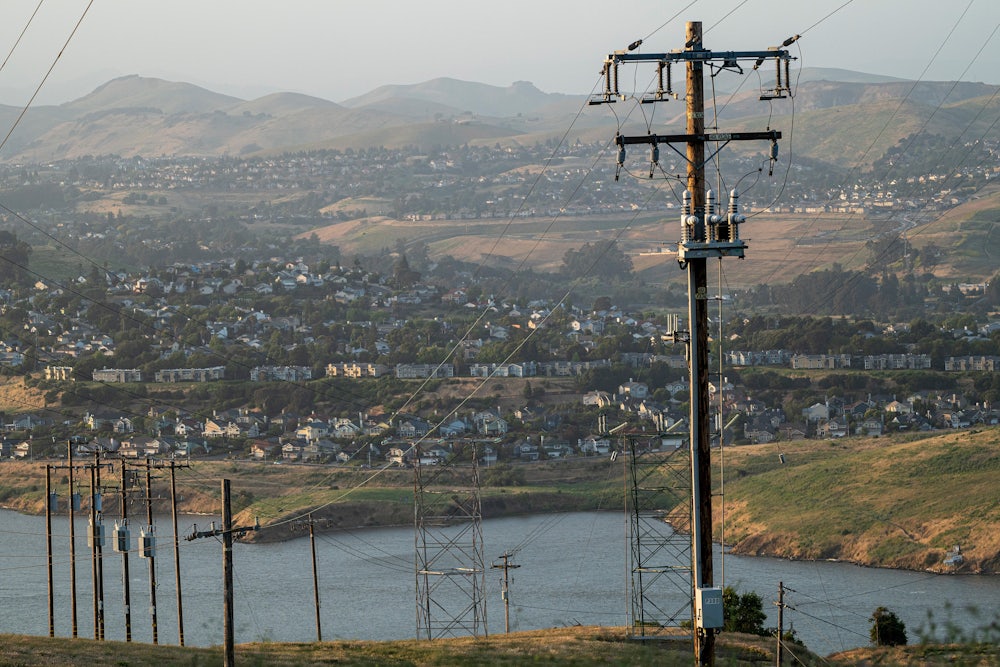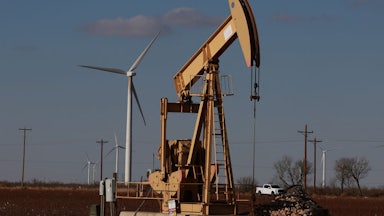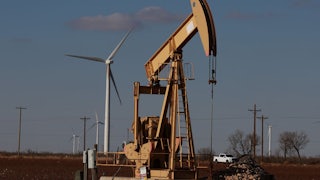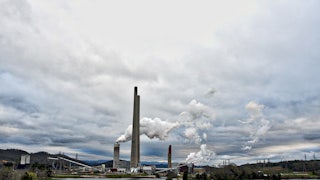Ask any expert how the United States should address the climate crisis, and they’ll probably start by talking about the need to transition our electric grid from fossil fuels to carbon-free power. Unfortunately for us, the grid is kind of a mess.
How the grid got the way it is, though, might help shed some light on how to bring it into the twenty-first century. Installed at different times and with different values in mind, electricity in the U.S. is a kind of living archive of what and who has quite literally held power at different points in American history.
First, some clarification: The U.S. electric grid doesn’t actually exist as we think it does, as a whole entity spanning the entire country or with any one group of people calling the shots. The New York Times this week took a look at how the nation’s electricity delivery system is not ready for the mass overhaul that getting off fossil fuels will require. The piece’s extensive maps document how and where electricity travels, highlighting how what we think of as “the grid” is simply a hodgepodge of infrastructure that moves electrons.
In a literal sense, as the Times explained, there are three separate grids—sets of interconnected power lines—that keep lights on in the continental U.S.: one for the East, one for the West, and another for Texas. This basic setup isn’t just a messy accident but reflects the ideological battles that defined much of the early history of electricity.
The country’s network of transmission lines—carrying high voltages over long distances—began to take shape largely after World War II. “We live in the wake of a very strange organization of state capacity in the immediate postwar years,” said New York University historian Andrew Needham, who researches the history of electricity in the U.S.
Out West, the Bureau of Reclamation built lines in rural areas where private companies wouldn’t go. “But the Army Corps of Engineers is not really doing that in the East, where you have these grids that are really built by and large by private-sector utilities,” Needham told me.
Long before then, though, the politics of electricity had begun to establish a division of labor over control of power that endures to this day. Around the turn of the twentieth century, private power companies starting to string lines up across the East Coast struck a deal with regulators. In exchange for a monopoly over their service area, they would submit to state regulators, who could ensure they weren’t charging exorbitant rates.
The electricity business consolidated not long afterward through the use of holding companies, which bought up smaller utilities, growing into vast empires that—unlike their component parts—weren’t subject to regulatory oversight. (On top of power lines, these could also own gas mains, railroads, and streetcars.) Not unlike a pyramid scheme, holding companies enticed shareholders—including many working- and middle-class families—on the promise of a safe investment that would grow over time into a healthy nest egg. By 1920, about three-quarters of the country’s electricity was owned by just 10 companies.
Despite the vast wealth utility holding companies had generated, some 90 percent of rural homes still didn’t have power by the time the Great Depression took hold—utilities couldn’t find a way to make a profit and didn’t think rural families would either use much electricity or pay their bills. Making matters worse was the fact that these fortunes were built on a financial house of cards. The bottom finally fell out in the early 1930s, when tycoon Samuel Insull’s $3 billion, 32-state-spanning holding-company empire wiped out its 600,000 shareholders. Beyond losses for financiers were those borne by “thousands and thousands” of middle- and working-class people, Time wrote at the time, who had invested their life savings in Insull on the promise of “good safe and sound investment.”
It wasn’t a foregone conclusion that for-profit companies like Insull’s would dominate electricity in the U.S. The bargain that for-profit providers struck with regulators for their monopolies also served to outmaneuver the thousands of publicly owned municipal utilities that had sprung up in places where for-profit lines wouldn’t go. With Insull himself now one of the most hated men in the country, public power had an opportunity to gain new ground.
The same year that the Insull empire collapsed, Franklin Delano Roosevelt campaigned on fighting “evil” utility barons, extolling the virtues of publicly owned power as an alternative to the private sector. Public power, he said on the stump in 1932, “will be forever a national yardstick to prevent extortion against the public and to encourage the wider use of that servant of the people—electric power.”
As president three years later, Roosevelt passed a law cracking down on holding companies and limiting their scope. Unlike private companies who regarded rural residents as a financial liability, New Deal public power programs treated electricity as a gateway to economic development. Majestic dam projects out West were meant to create lush, profitable agricultural communities through irrigation. The Rural Electrification Administration sought to uplift poor farmers, building 380,000 miles of power lines by 1943—42 percent of what the U.S. has ever built.
Much of that infrastructure is still around, with rural electric co-ops, municipal utilities, and other public power providers continuing to serve about one in seven people in the U.S. Roughly 10 percent of power is still generated in publicly owned facilities.
As an governing ethic, though, public power has fallen out of favor. Starting in the 1970s, policymakers sought to inject more market competition into an energy sector still largely defined by vertically integrated, for-profit power providers. In response to the energy crisis in the 1970s, Congress passed the Public Utilities Regulatory Policy Act, allowing power plants not owned by monopoly utilities to sell power over their lines. Introducing more competitors, the thinking went, would encourage more efficiency.
That deregulatory push went a step further in the 1980s and 1990s, when many utilities were forced to divest their power-generating facilities. Such changes have arguably created a more favorable environment for renewable energy, offering both explicit incentives to alternative energy and offering its generators the chance to sell power over utilities’ lines. The changes also, though, opened up opportunities for scammers preying on consumers’ ability to “choose” power providers that often function as profit-seeking middlemen. Perhaps the most infamous example is Enron, which gamed California’s deregulated grid and manipulated wholesale electricity markets to charge exorbitant rates.
Policymakers in the New Deal era—armed with strong congressional majorities—believed it was the government’s job to step in to fill gaps left by the private sector. From the 1970s on, that consensus shifted: If the market had left a gap, the problem was that it was insufficiently free.
For-profit utilities played a not insignificant role in that shift: From the 1930s on, electric utility companies and trade associations were a key funding source for right-wing think tanks that led the charge to bring fringe economic ideas about the evils of state-led economic planning and the need to insulate markets from democracy into the political mainstream. In recent years, utility trade groups have lobbied to ensure that their member utilities control and profit from any new transmission lines built to accommodate electrification.
While this was hardly unique to electricity, Republicans and Democrats became increasingly cynical about the government’s ability to do big, good things throughout the neoliberal era; if society had a problem, many thought, the private sector would solve it. Unfortunately, the ultimate big, good job is now before us: getting the grid off fossil fuels. In New York and other states, campaigners have looked again to public power to play the role it has historically: stepping in to do what for-profit companies won’t.
“The deregulation story lines up with a lot of other parts of the past 50 years of economic history,” Needham said. “Different groups come in saying they have found a marginal advantage. Either that doesn’t bear out, or they create new vulnerabilities in the system.” The “accidental federalism” that defines the U.S. grid, he added—the patchwork of rules and entities that control how electrons travel—has major ramifications for the country’s ability to get off fossil fuels.
“Another thing deregulation has done is really made unclear who’s responsible for building,” Needham told me. “If we think of the new social project now embedded in building new transmission capacity, deregulation has made it more difficult to figure out who’s responsible for pursuing that. If we think of decarbonization as both a technological and economic project but also as a social project, the systemic purpose and the social purpose are close together. But those groups have been apart for so long.”










